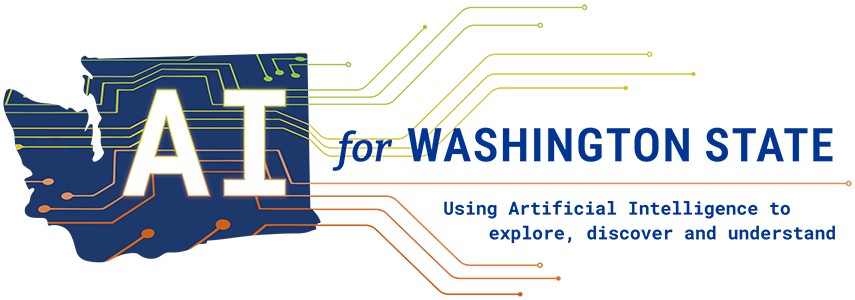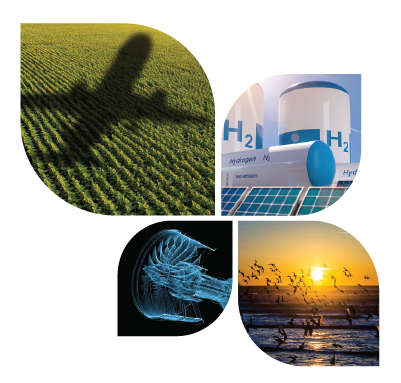Publication
Creating a Model for Global Decarbonization through Washington State Science, Engineering, and Technology
Overview
The 13th annual symposium of the Washington State Academy of Sciences addressed perhaps the most consequential issue facing the global community today: the need to decarbonize human activities. Unless levels of greenhouse gases in the atmosphere are held below levels that are fast approaching, the nations of the world will face crises greater than any they have experienced in the past.
The symposium was entitled “Creating a Model for Global Decarbonization through Washington State Science, Engineering, and Technology” because of the vast potential for scientific research and technological innovation to reduce the emission of greenhouse gases not just in Washington State but around the world. In particular, the symposium focused on three sectors where science, engineering, and technology in Washington State could have worldwide effects: land use, aviation, and information and communications technologies.
Below are the major conclusions and potential actions discussed during the plenary presentations, breakout groups, and symposium discussions.
GENERAL CONCLUSIONS AND POTENTIAL ACTIONS
- States that lead in decarbonizing their economies will lead in job growth, infrastructure development, and economic prosperity.
- Though Washington’s emissions of greenhouse gas emissions are small on a global scale, activities carried out in the state have far broader consequences.
- Strong and coordinated research, development, and demonstration partnerships can support an efficient carbon innovation ecosystem.
- A shared R&D infrastructure, a robust workforce development strategy, and sector-specific technical services like carbon measuring and certification processes will enable faster progress.
- Technologies and practices that exist today can not only slow and reverse the accumulation of greenhouse gases in the atmosphere but provide many ancillary benefits to human and planetary well-being.
- Decarbonizing the electrical supply will require working with a wide range of stakeholders, including utilities, environmental advocates, labor organizers, communities of color, and others who have been disproportionately affected by the energy infrastructure.
CONCLUSIONS AND POTENTIAL ACTIONS IN THE LAND USE SECTOR
- Agriculture and forestry practices in Washington State offer ways to increase productivity and reduce greenhouse gas emissions worldwide.
- Loss of soil fertility poses a risk to modern society, just as it has contributed to the decline of past societies.
- Soil microorganisms are critical for the storage of carbon in the soil and fluxes of greenhouse gases to the atmosphere.
- Better understanding of the fundamental processes that microorganisms carry out in the soil will enable predictions of how those processes will be impacted by future climate change.
- The practices of conservation agriculture—minimal disturbance of the ground through techniques such as no till farming, maintaining a permanent ground cover through such practices as the use of cover crops and companion crops—can restore fertility to the land and build up soil carbon.
- Washington State could be a leader in decarbonization through research on issues such as soil carbon cycling and storage, soil ecology, and land management practices.
- Better diagnostic tools and tests are needed that are specific to the ways in which land is used in the state so that land use practices can be informed by the local environment.
CONCLUSIONS AND POTENTIAL ACTIONS IN THE AVIATION SECTOR
- As a global hub of aircraft manufacturing, Washington State will have a major impact on energy use in the aviation sector for decades to come.
- The state has major R&D efforts affecting all three of the potential pathways to decarbonizing the aviation sector: aviation biofuels, battery-based electrification, and the use of hydrogen as a fuel.
- The development of sustainable aviation fuels requires access to an inexpensive source of carbon and an inexpensive way of converting that carbon into fuels.
- Electrification of small aircraft is already possible, and the lessons learned from developing such aircraft can be scaled up to larger aircraft.
- Electrification of the aviation sector will require the development of new infrastructure, the resolution of intellectual property issues that can handicap industry-academia collaborations, and a better prepared workforce with strengths in developing practical solutions to problems.
- Better coordination of Washington State’s robust network of experts and institutions working on the decarbonization of aviation would enable faster progress.
- Solving the “last mile” problem of getting new energy systems into aviation will require changes in the aviation infrastructure.
CONCLUSIONS AND POTENTIAL ACTIONS IN THE INFORMATION AND COMMUNICATIONS TECHNOLOGIES SECTOR
- Because the leading cloud services companies are either headquartered or have presences in Washington State, pledges to move toward environmental sustainability create valuable new opportunities for statewide partnerships and initiatives with national and worldwide impact.
- Decarbonization of data centers, many of which are designed in Washington State, provides an opportunity to consider how such centers could provide services for the broader electrical grid.
- More applied research, along with greater access to research facilities, could create closer connections between academia, government laboratories, and industry while lowering the risk to industry of entering certain business areas.
- Better incentives are needed to promote integration of data centers and the electrical grid because neither has system has been designed to work together in the past.
- Getting to zero emissions in many sectors will require the development and application of innovative technologies, which will pose many important and challenging research questions.


